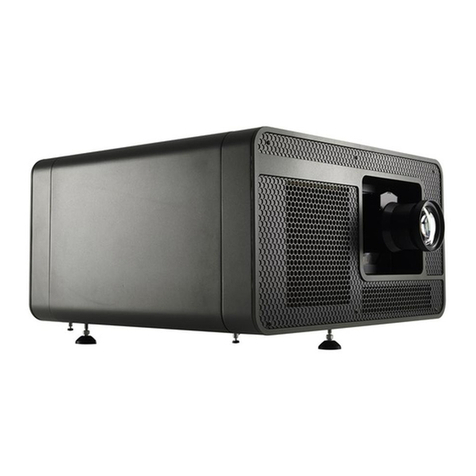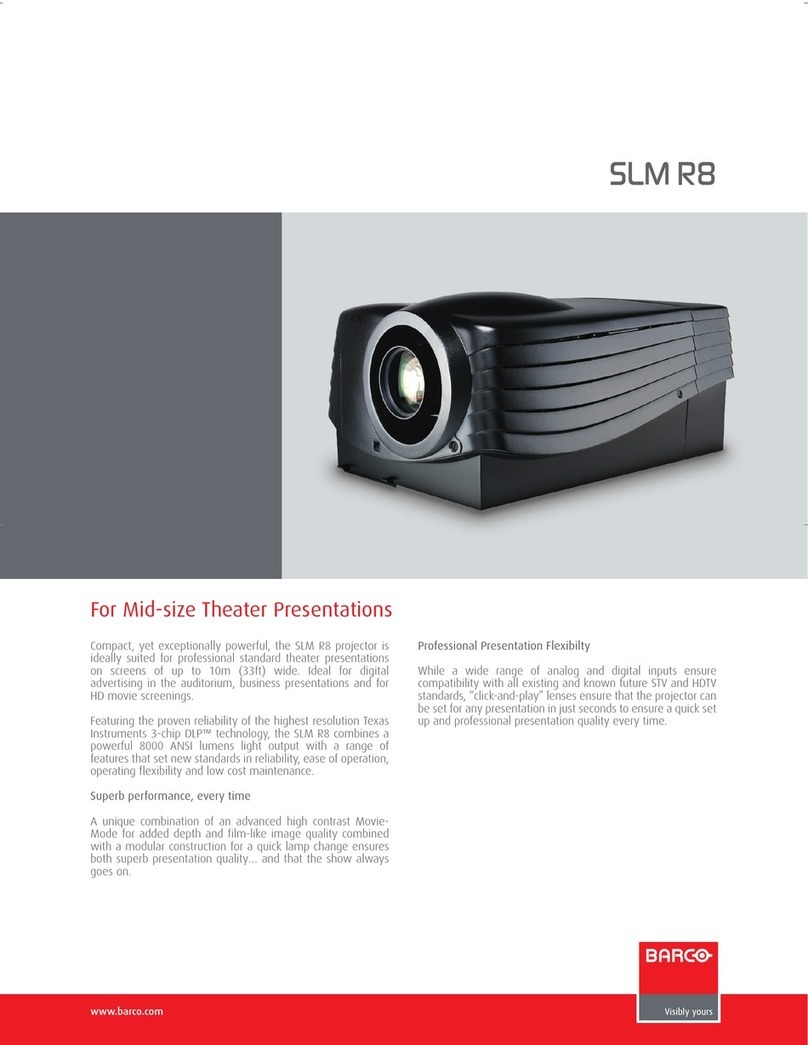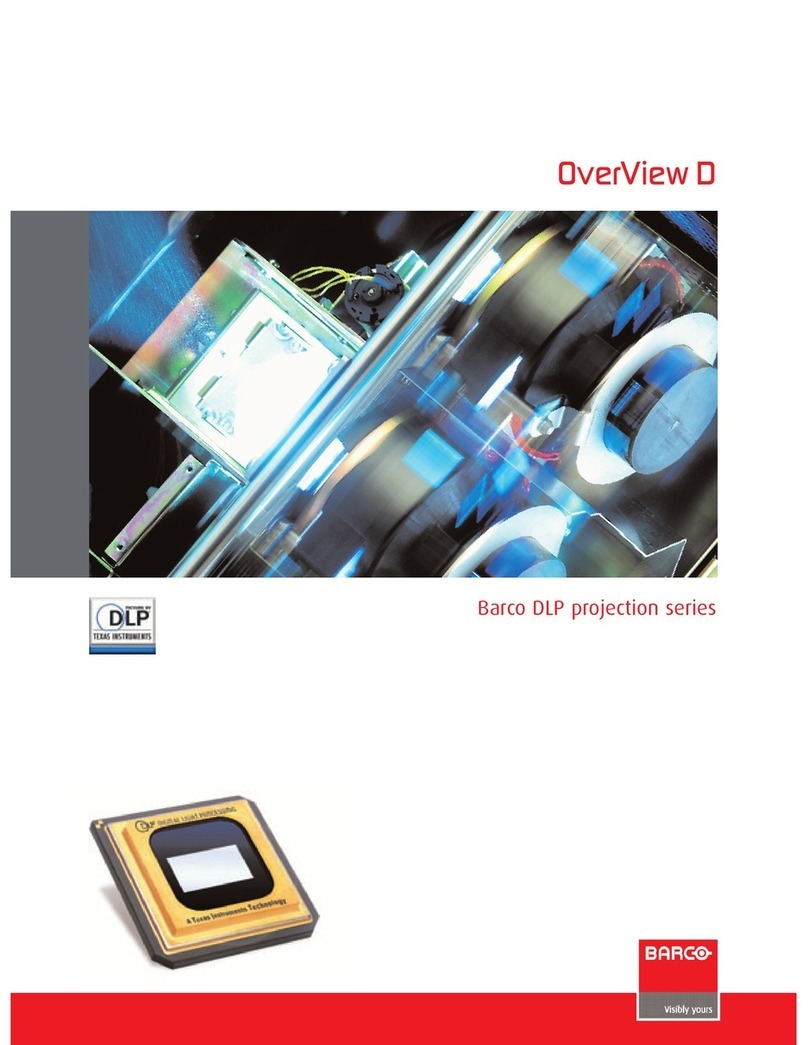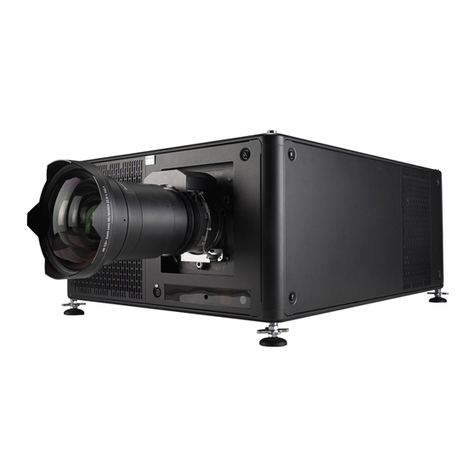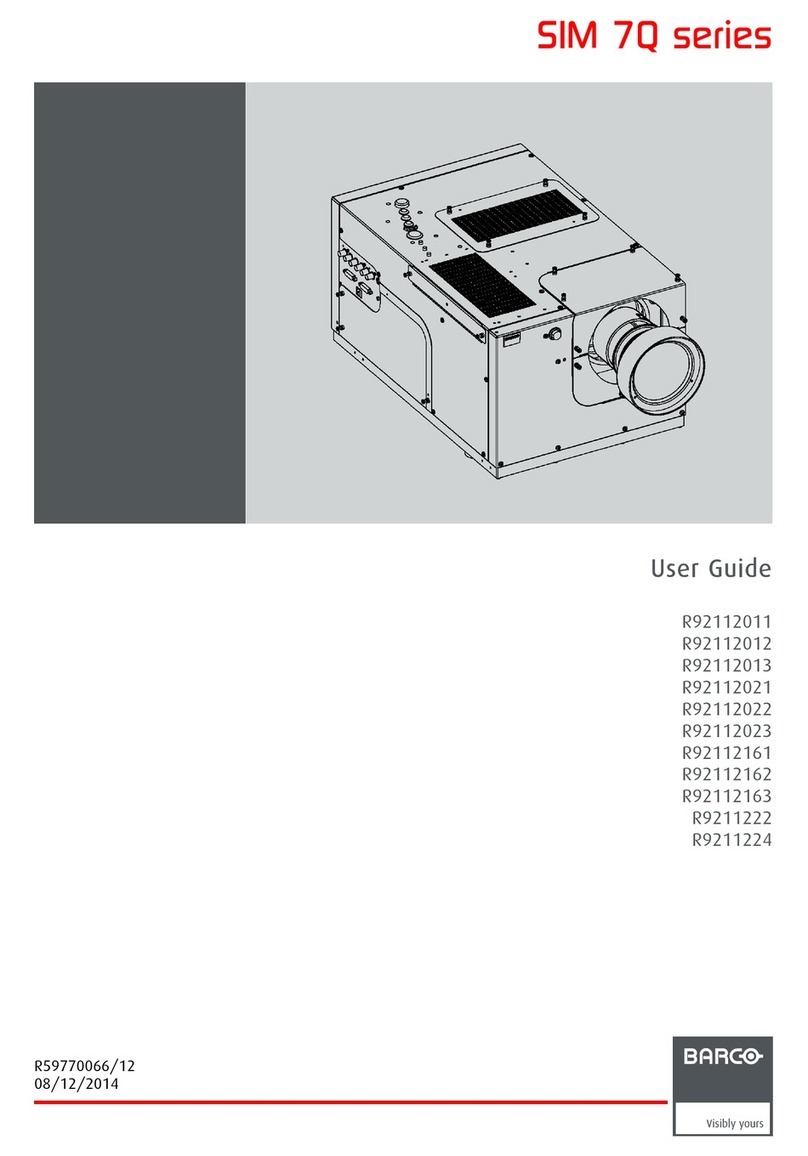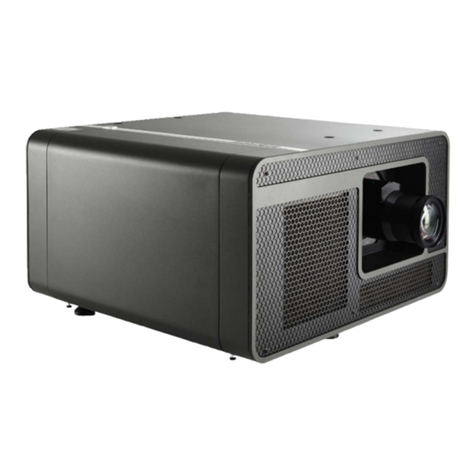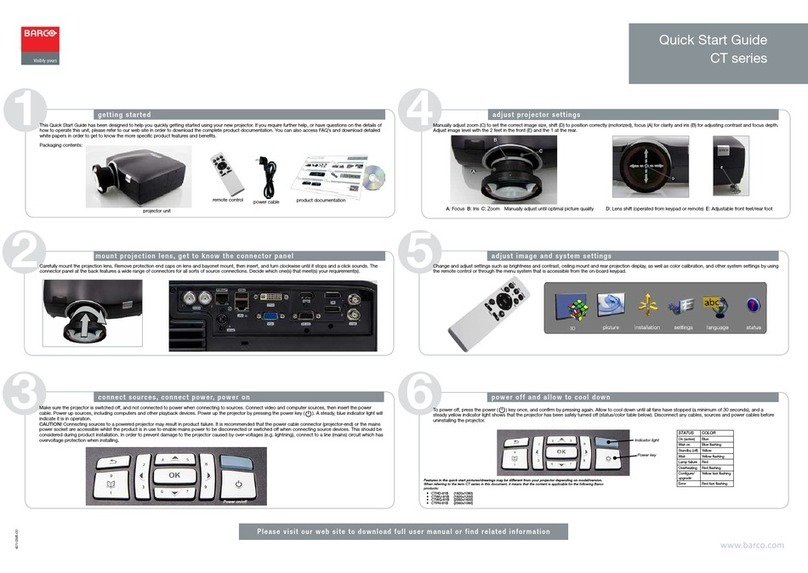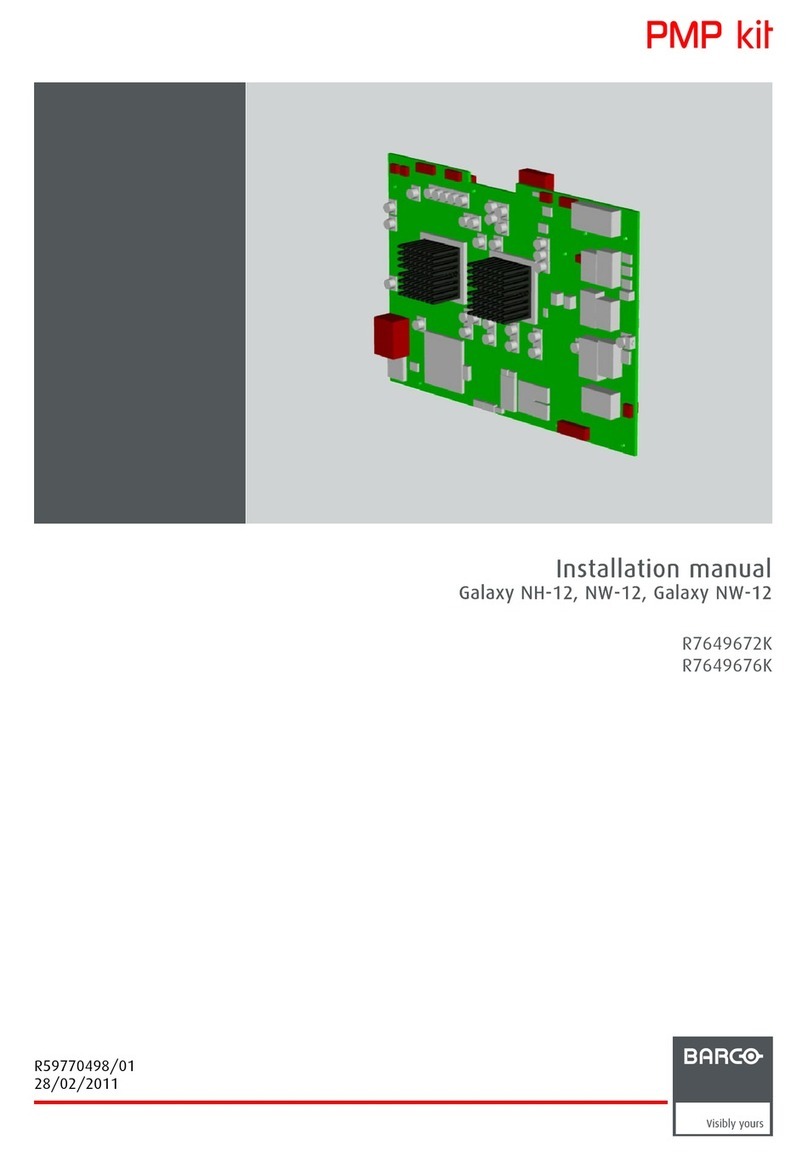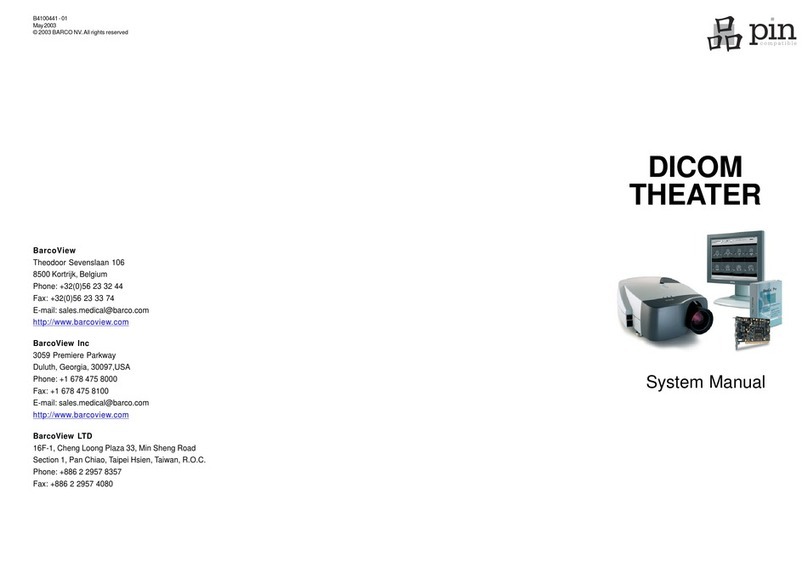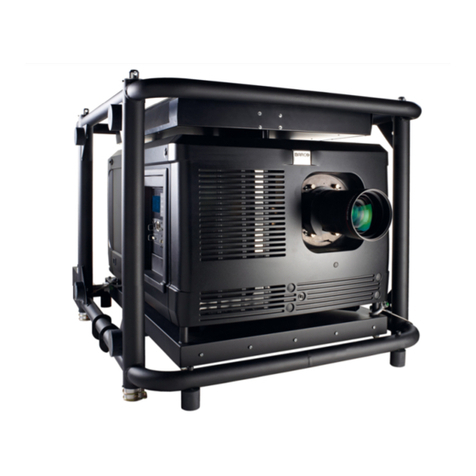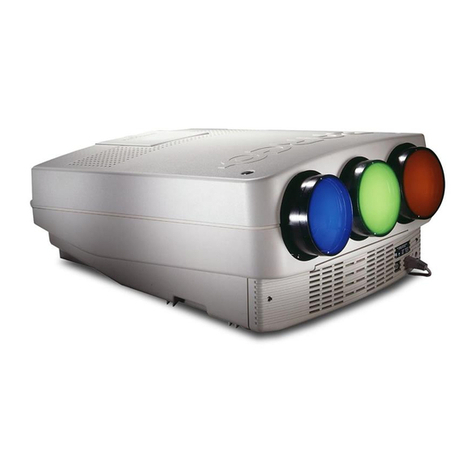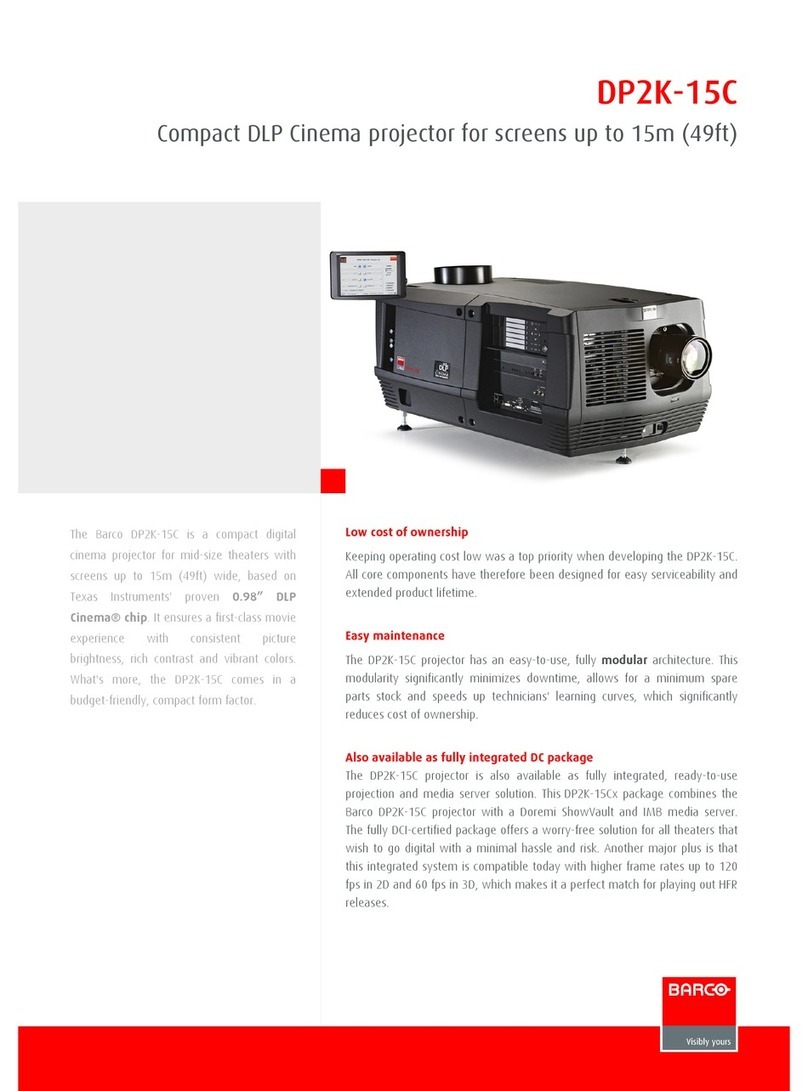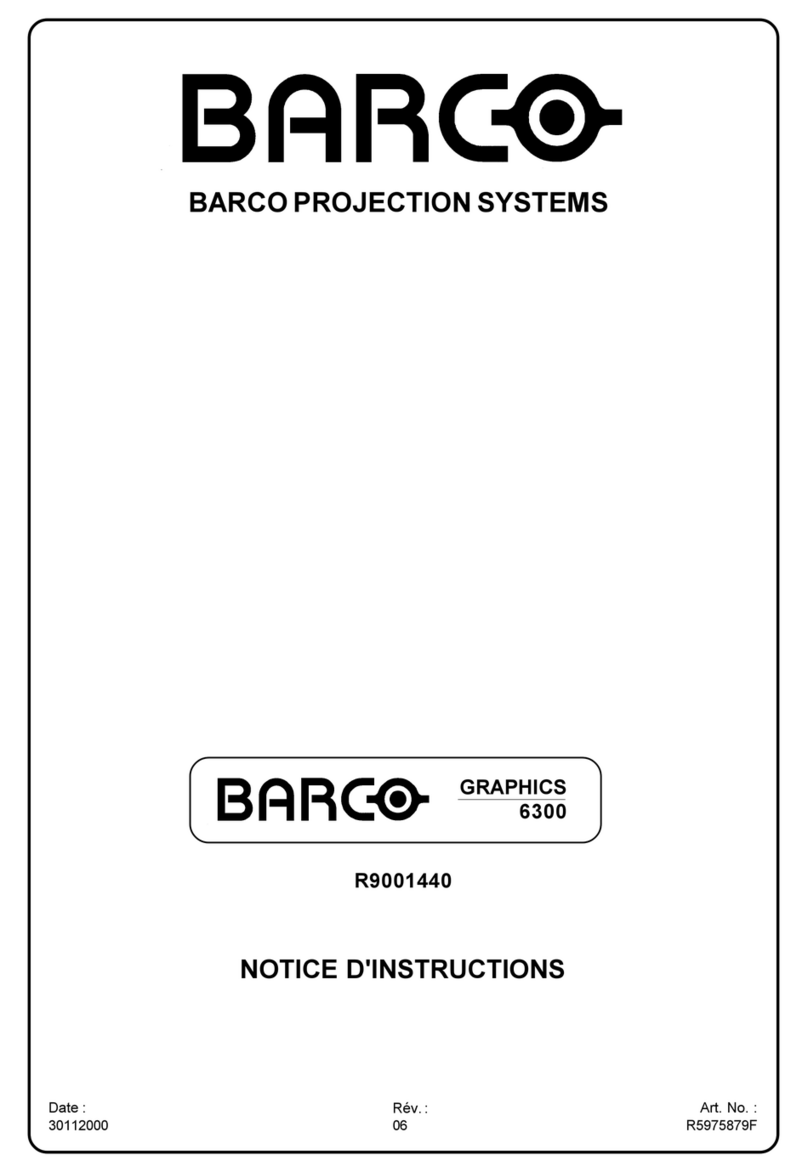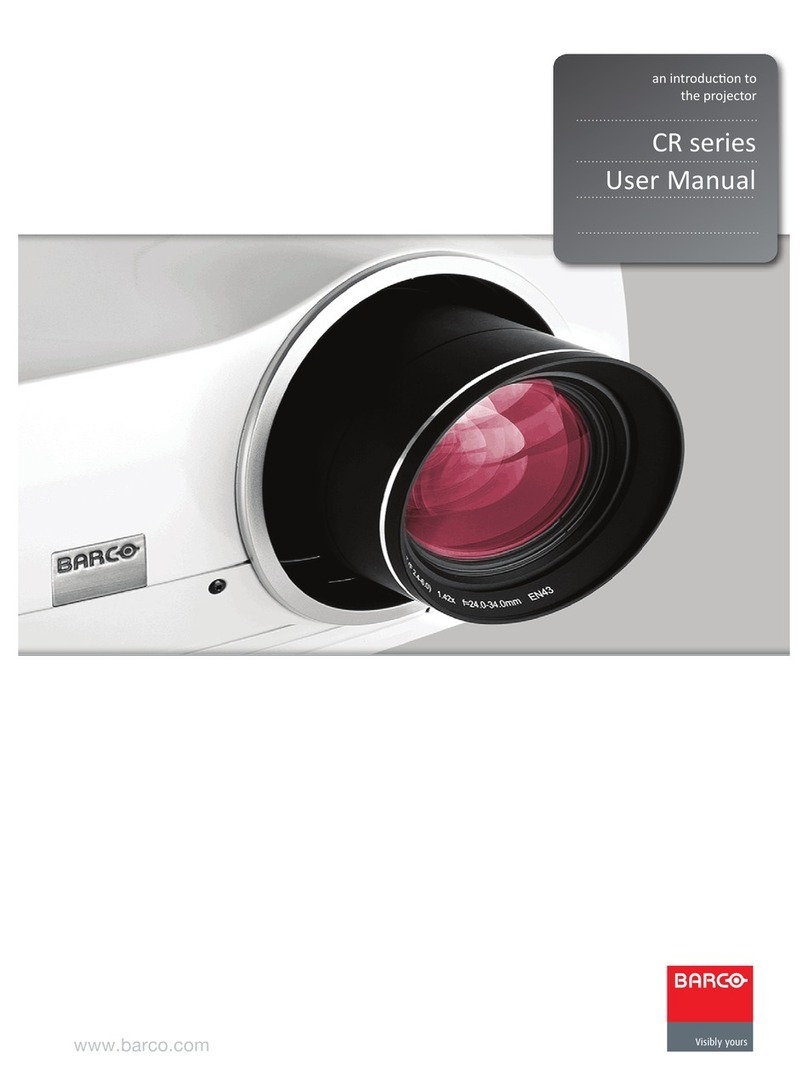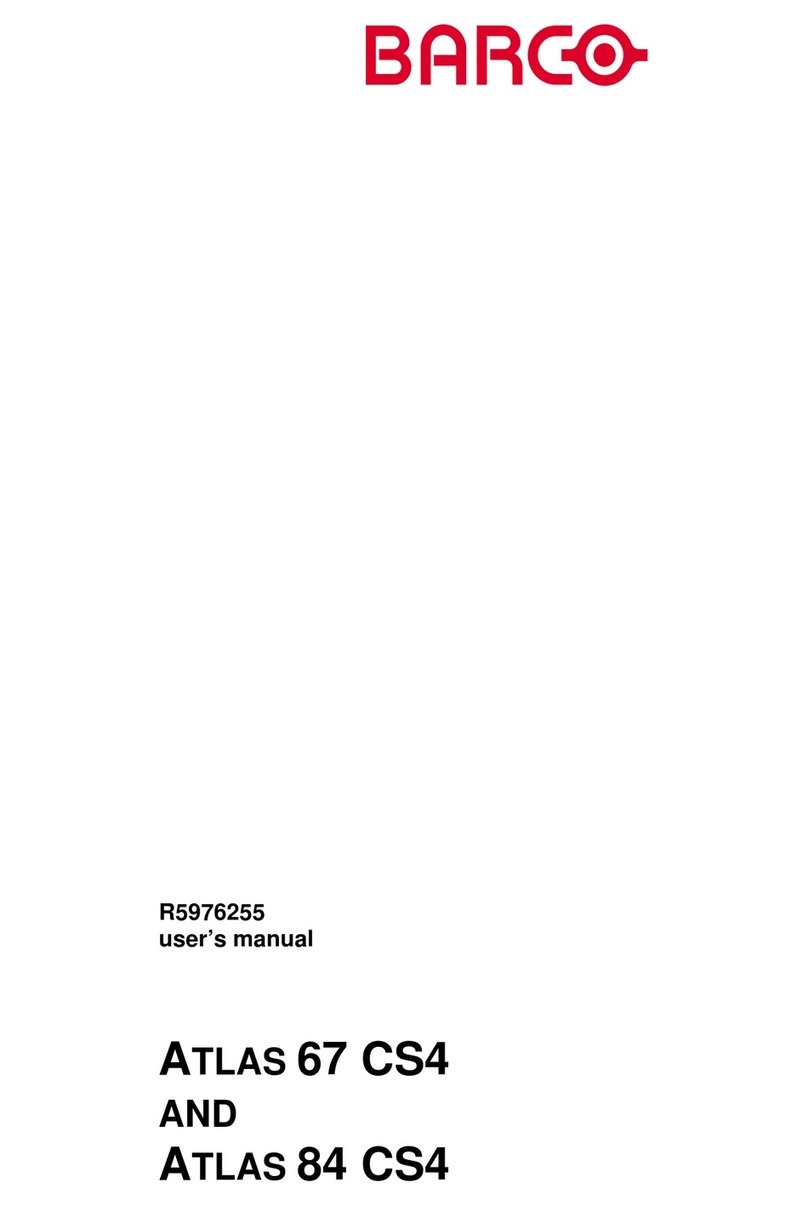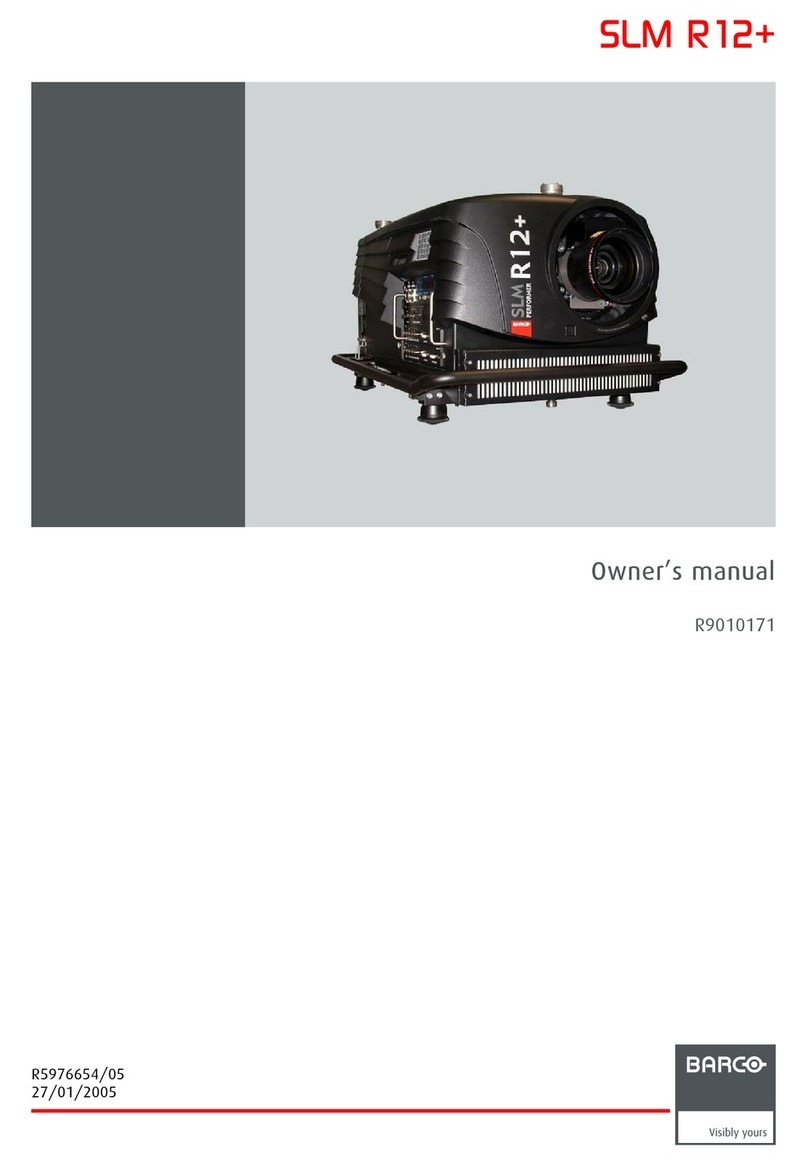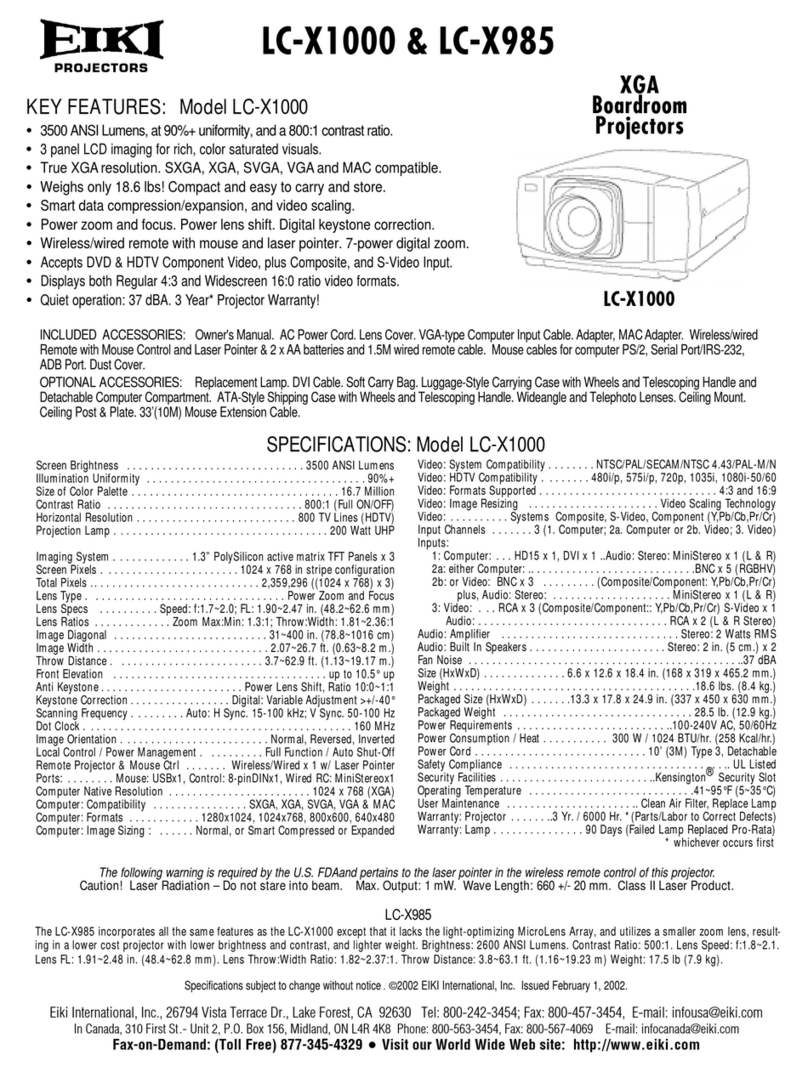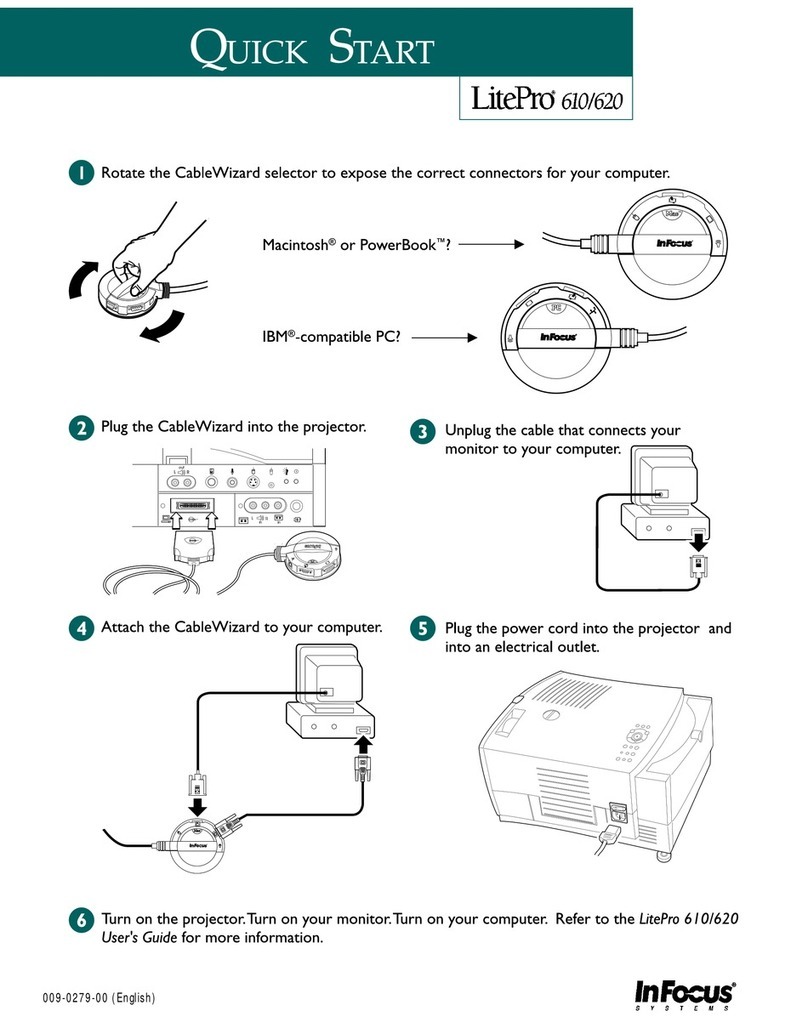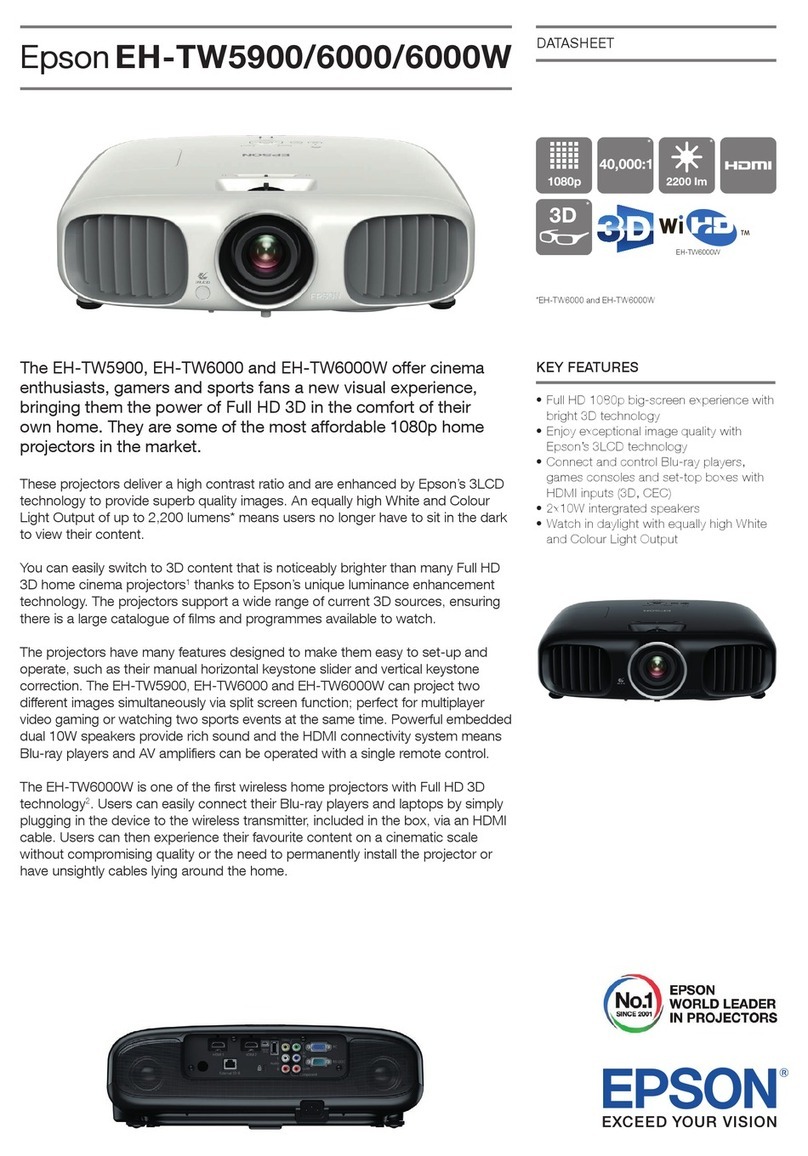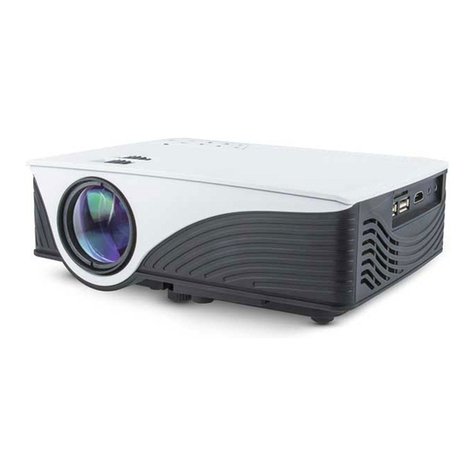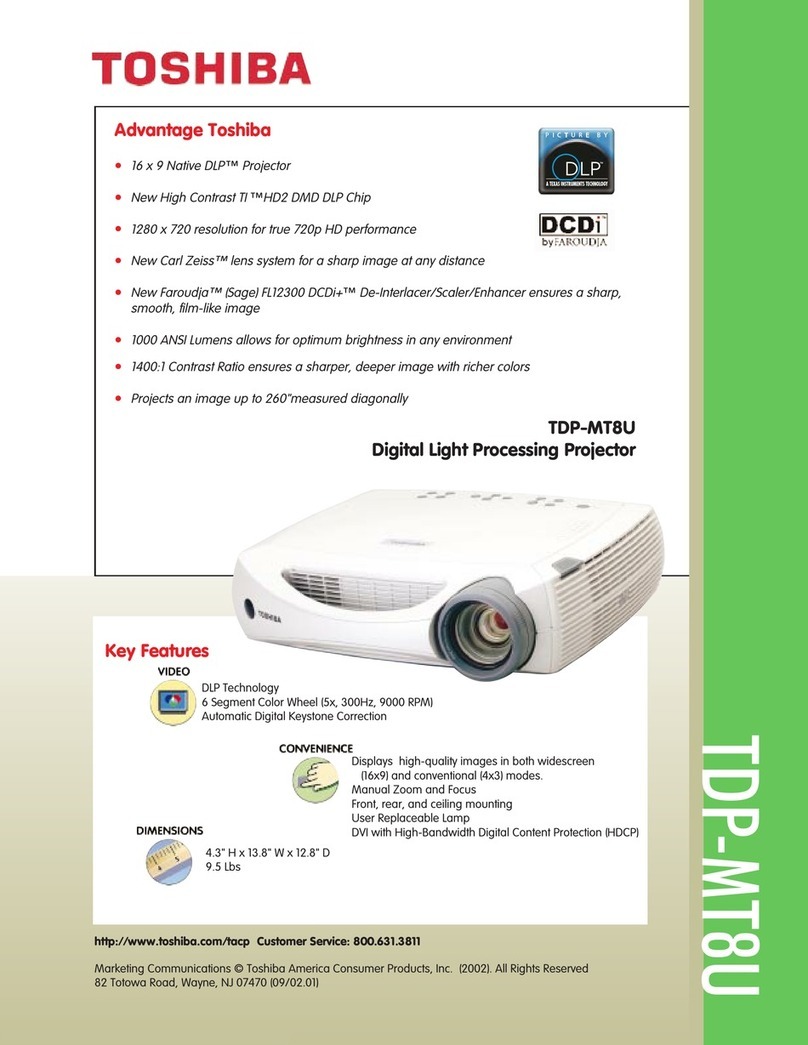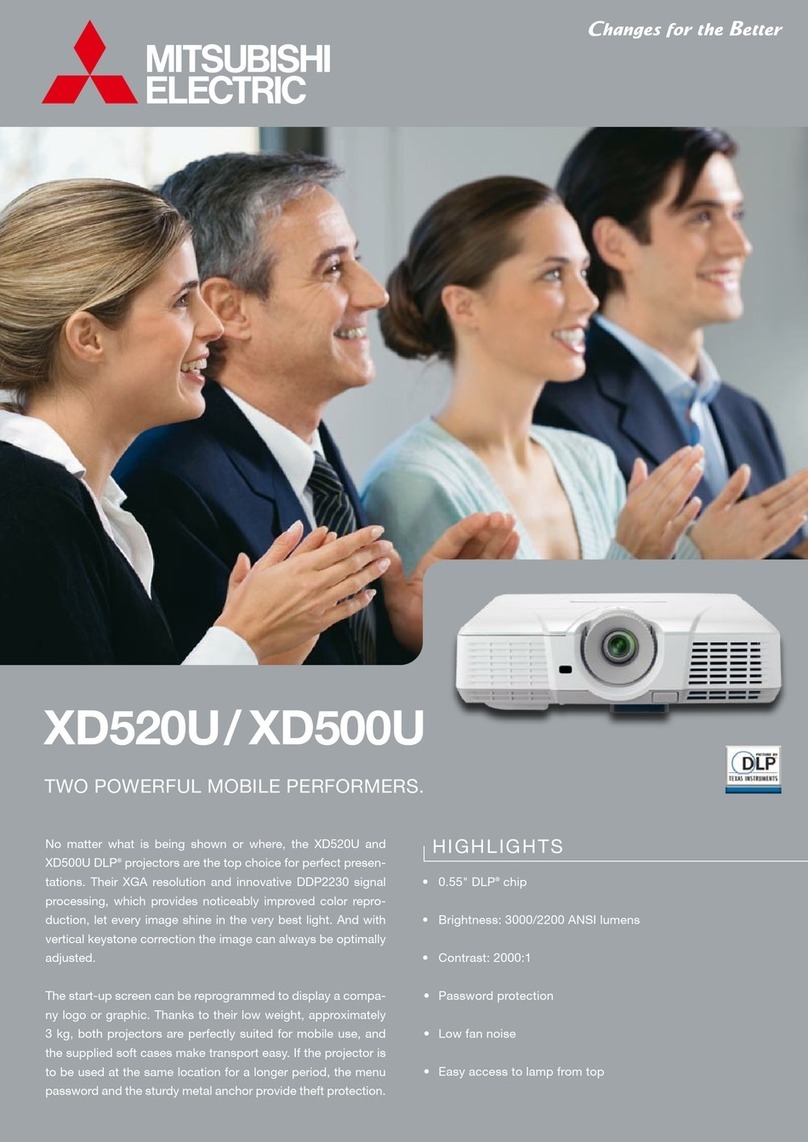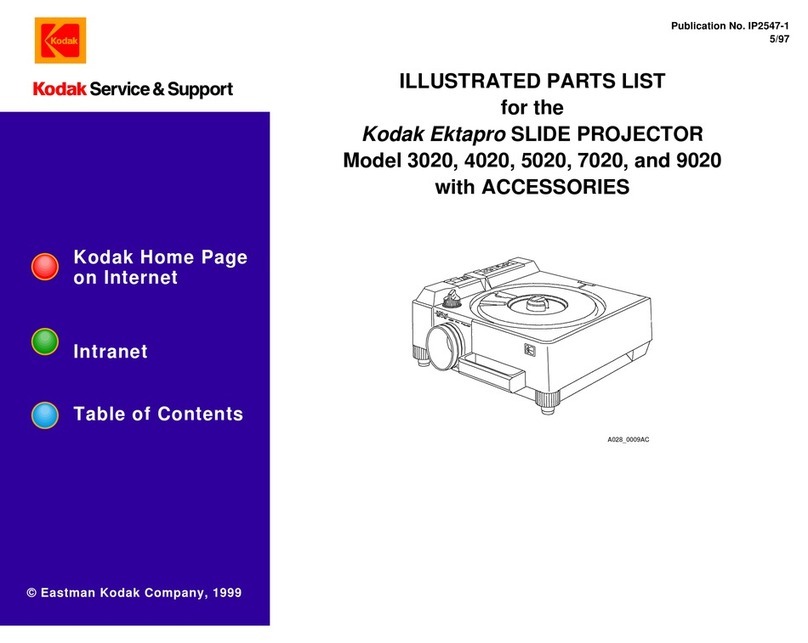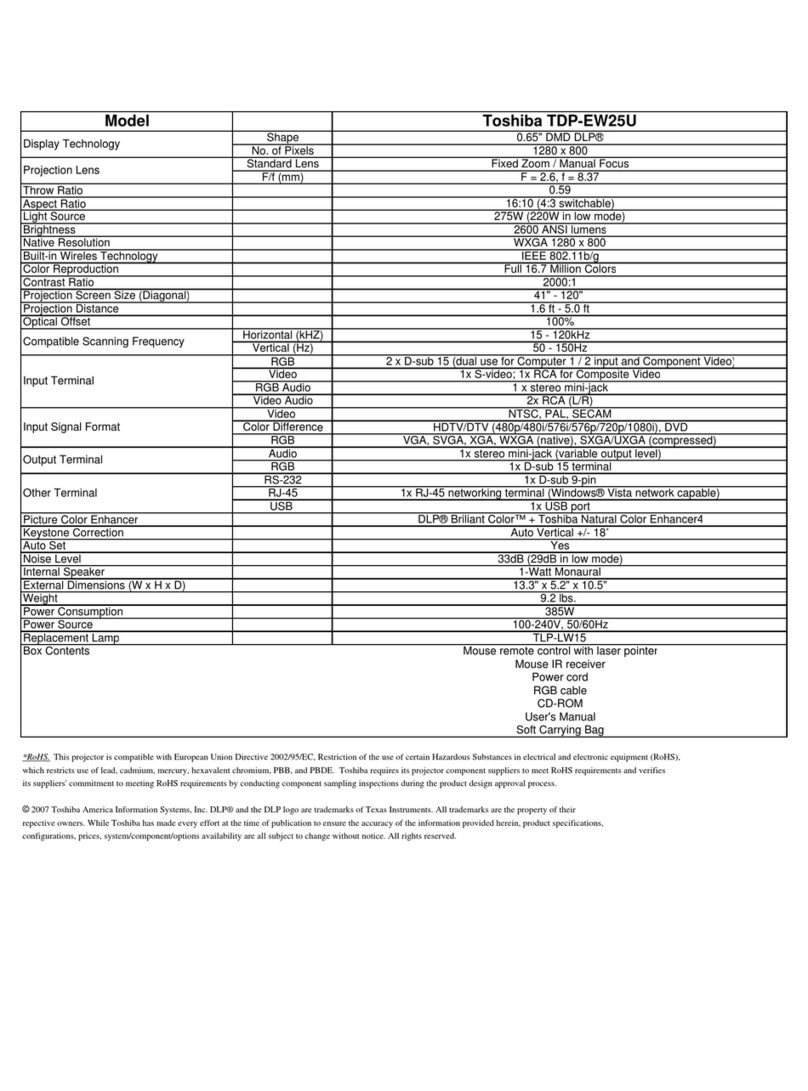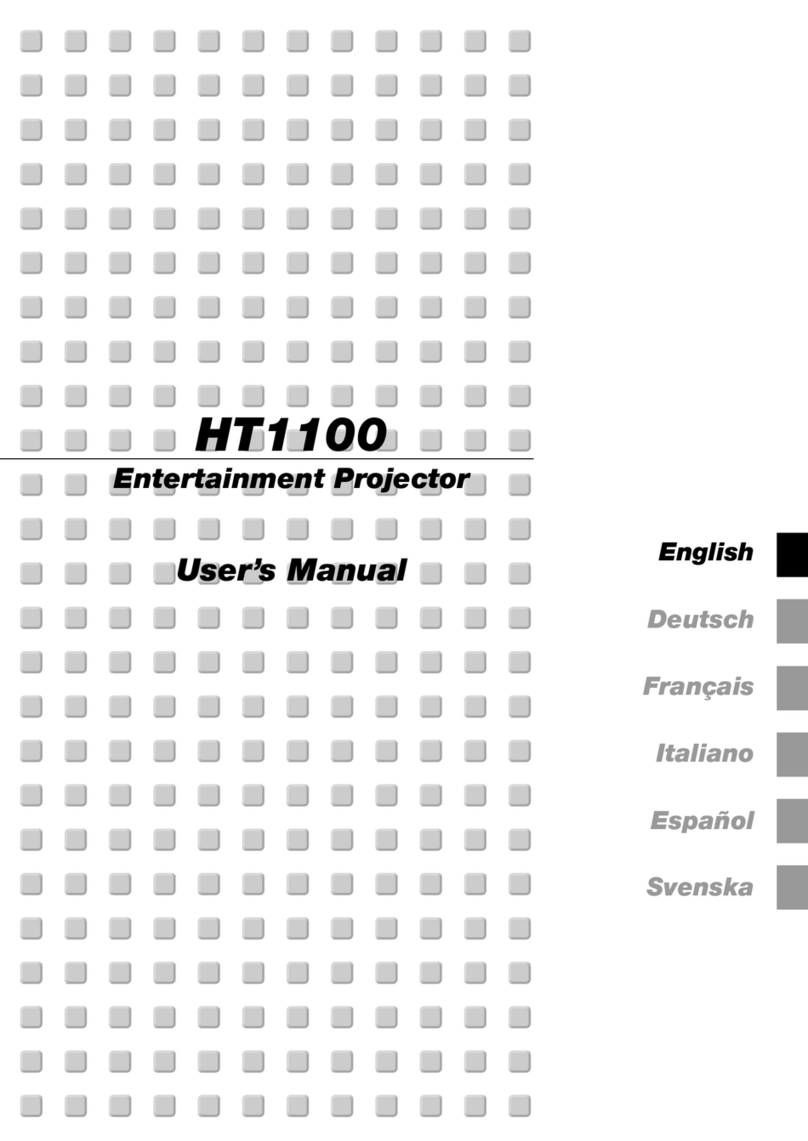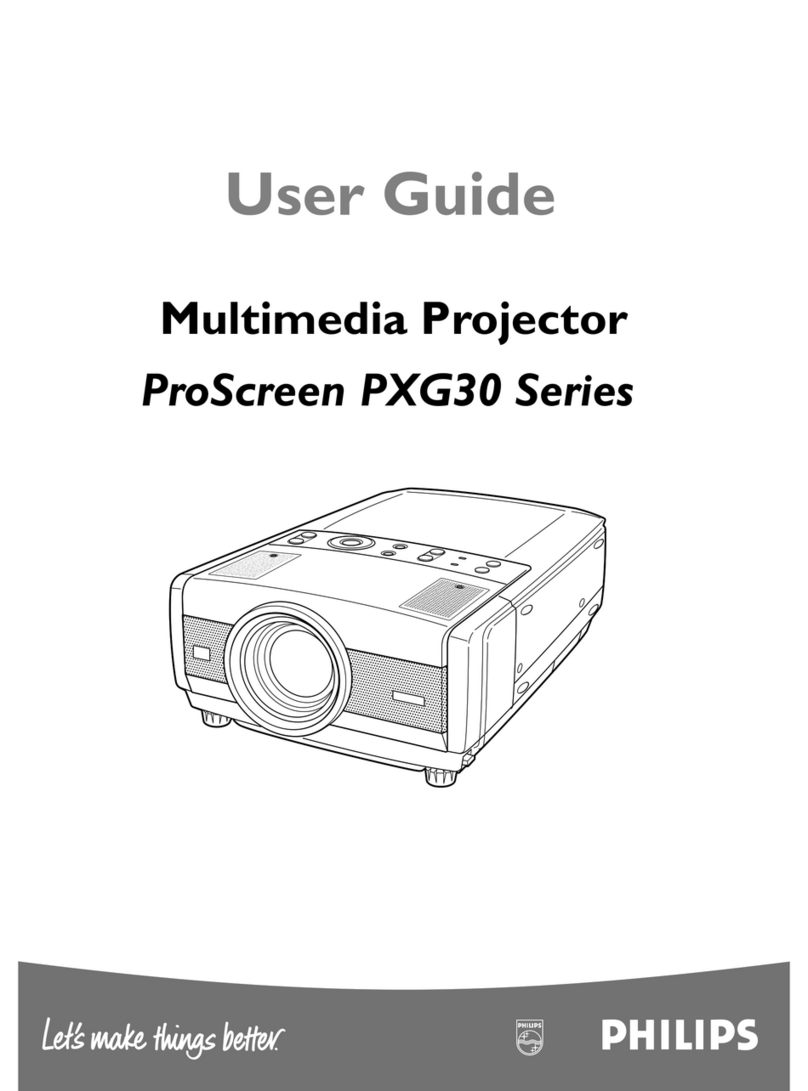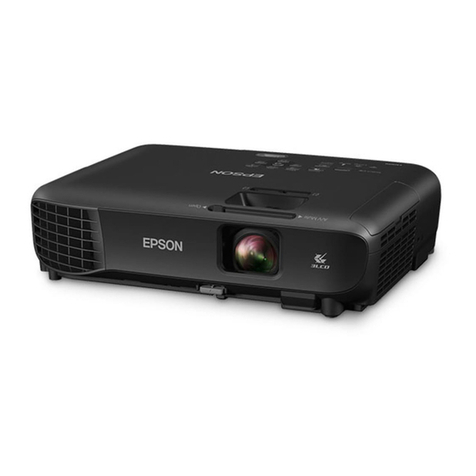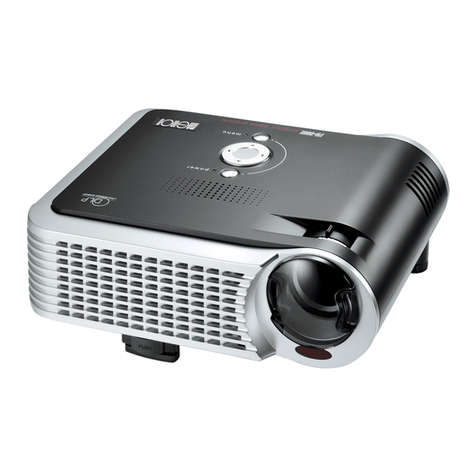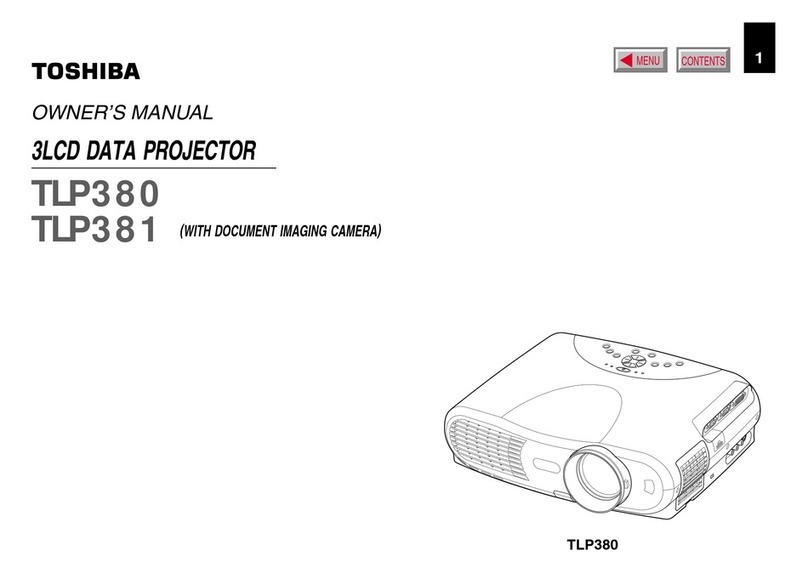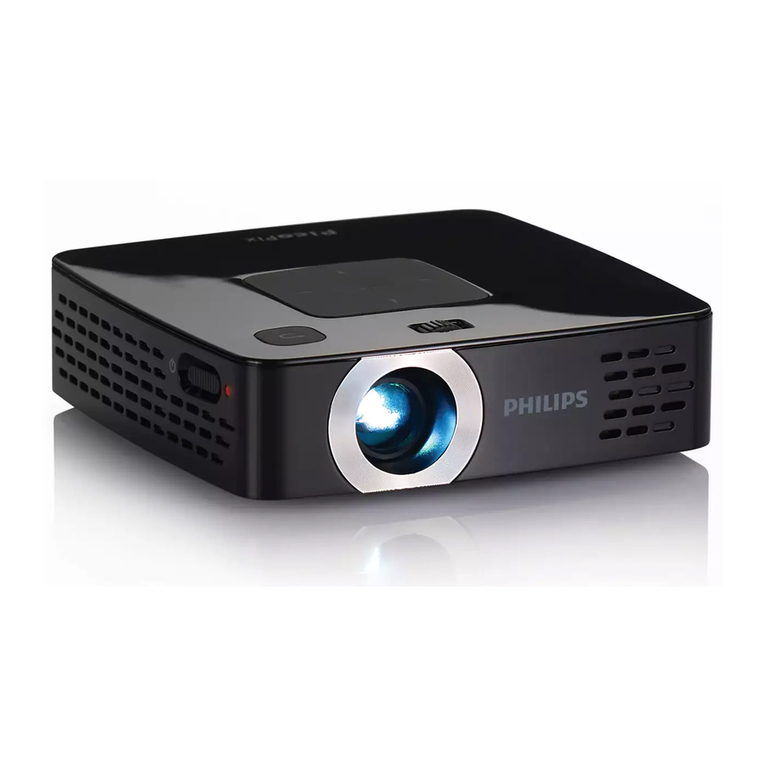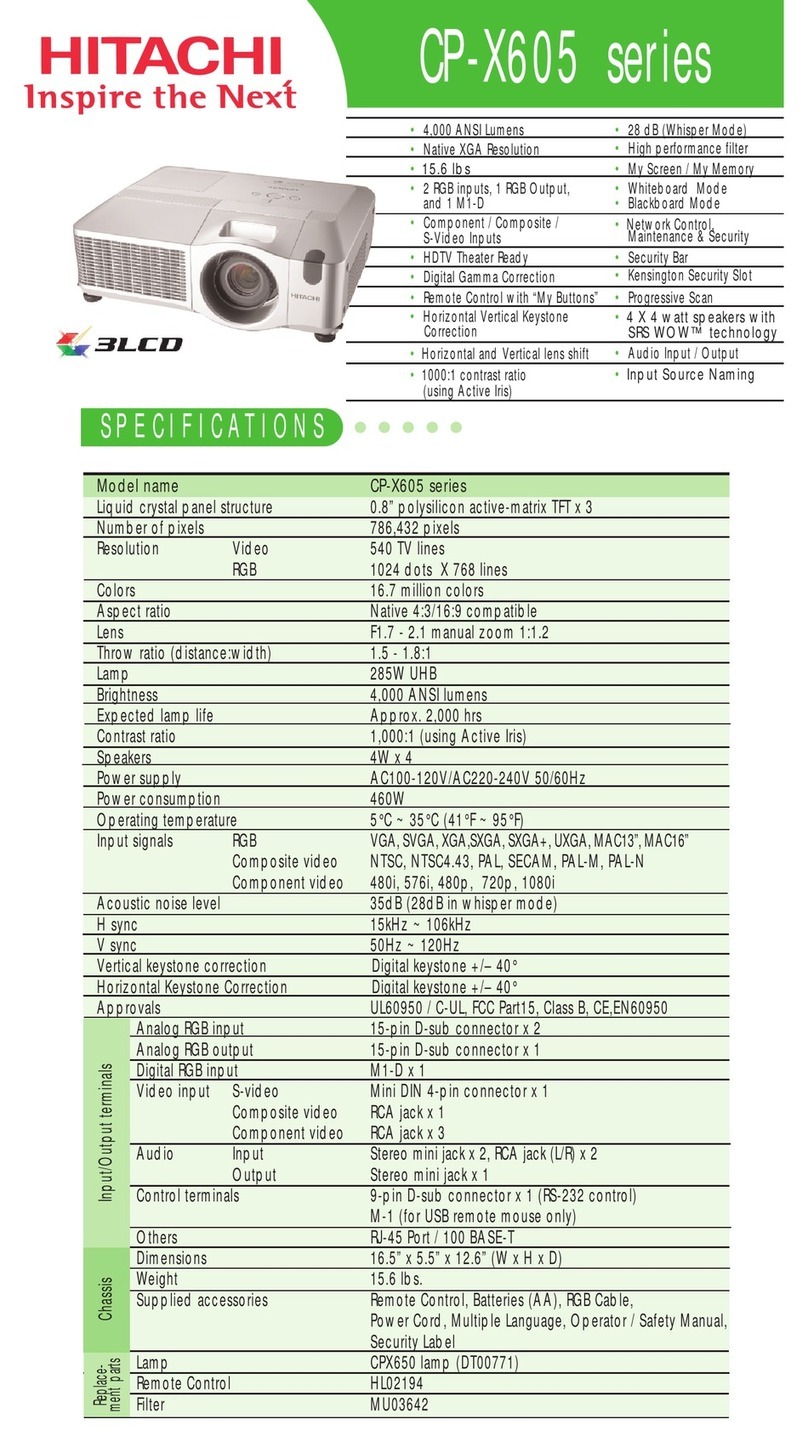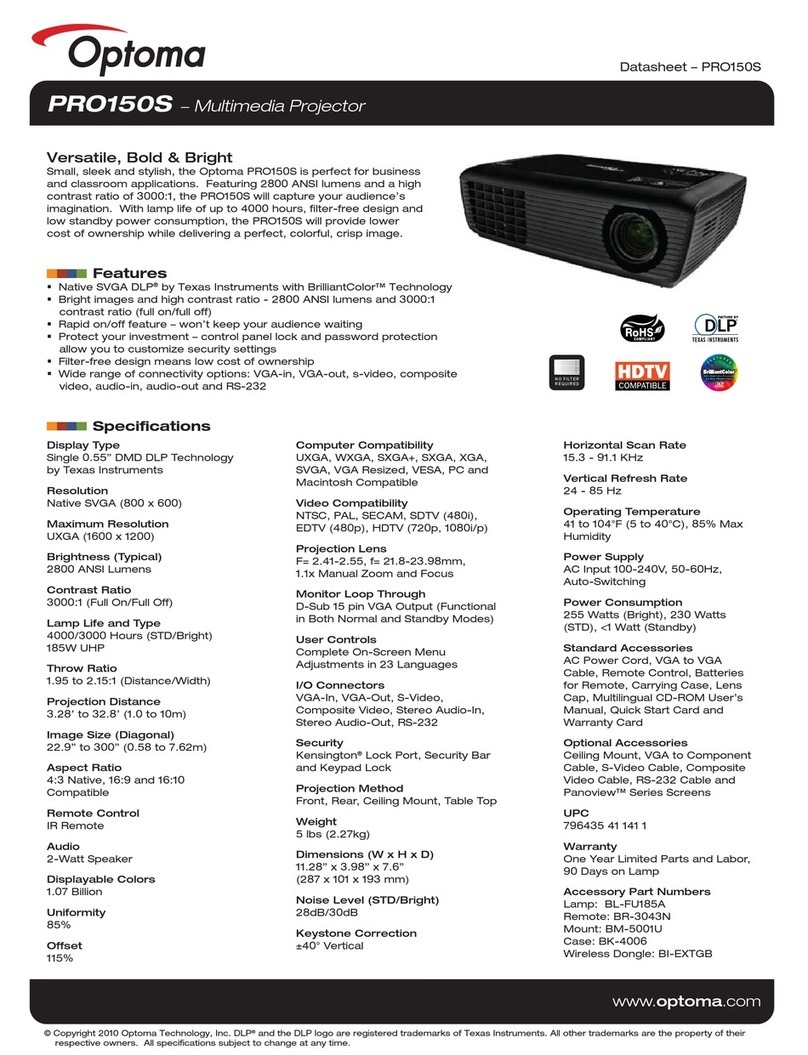
Stereo
LCD
CRT
DLP™
Lumens
With stereo projection, light output is at least
halved in the process of creating a separate left and
right eye picture. Projectors employing different
technologies but with the same ANSI lumen specs can
give quite different stereo lumen results. The stereo
lumen is the only practical value for accurately
measuring brightness in Virtual Reality applications.
BARCOREALITY 909
The motorized polarizing filter can be
disengaged by remote control for
full brightness in non-
stereo mode. BARCO GALAXY DLP™
An impressive 205 MHz A/D conversion
bandwidth ensures compatibility with high resolution
and high refresh rate sources for active stereo.
Fast Green Phosphor
CRT projectors offer a high dynamic range,
displaying detail from bright highlight areas to dark
shadow areas. Color matching and color uniformity is
excellent.
For active stereo applications, where double refresh
rates are required, the persistence and decay time of
the phosphor on the green cathode ray tube (CRT)
must be shortened.
Barco offers active stereo CRT projectors with fast-
phosphor green tubes at sizes of 7", 8", 9", and even
12”.
BARCOREALITY SIM 6
This LCD projector, which is specially
designed for applications in Simulation and
Virtual Reality, offers built-in Warp6TM
non-linear image mapping technology.
Warp6TM enables high-order pre-distortions
electronically with virtually no frame delay,
for use with curved-screen and dome
applications.
The BARCOREALITY SIM 6 projectors
shown here are equipped with Barco’s
external blending plates, for seamless soft-
edge matching across multi-channel displays.
Internally Stereo Optimized
By internally polarizing Barco LCD projectors, external
polarizing filters are not needed, thus avoiding the
excessive light loss caused by external polarization. In
this way Barco LCD stereo-optimized projectors are able
to maintain about 70% of the original light output.
Barco’s Transport Delay Reduction technology
essentially eliminates the delay between the input
signal and the projected image for optimal real-time
interaction with projected images.
Light Efficiency
BARCO GALAXY
Barco’s multi-channel-capable stereo-optimized
GALAXY, equipped with DMD™ (Digital Micromirror
Device™) optimized polarizers, displays active stereo at
SXGA resolution up to 110Hz.
Barco’s SyncLock technology ensures synchronization
between the Image Generator, the BARCO GALAXY
and the active stereo shutter glasses.
For passive stereo, Barco offers a range of DLP™
projectors with light output from 5,000 to 18,000 ANSI
lumens.
more product info on www.vr.barco.com
Stereobrochure 02-06-2003 15:39 Pagina 8
